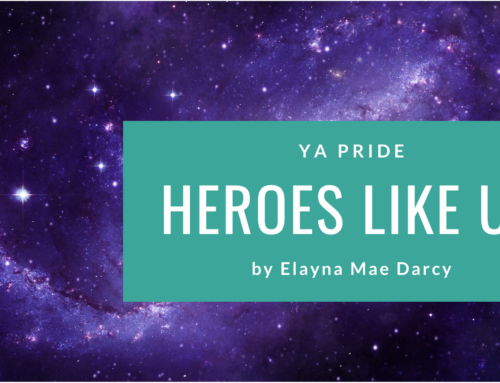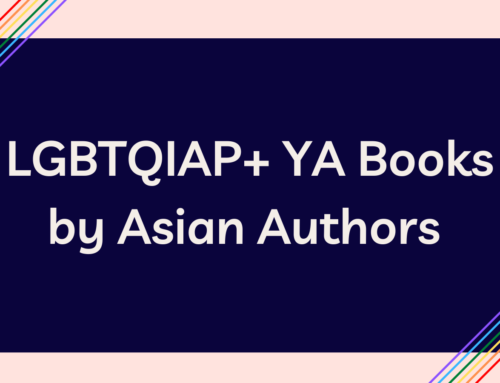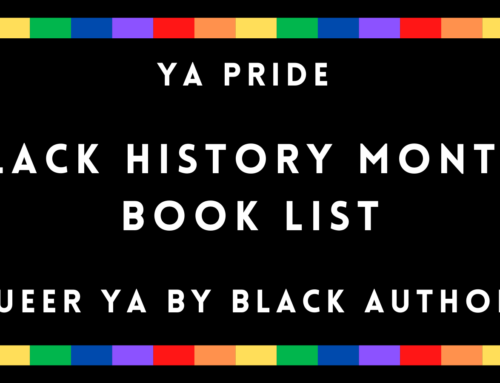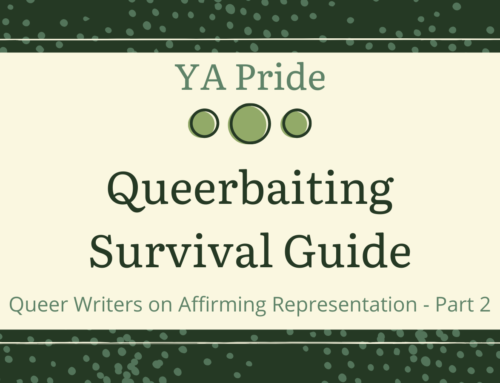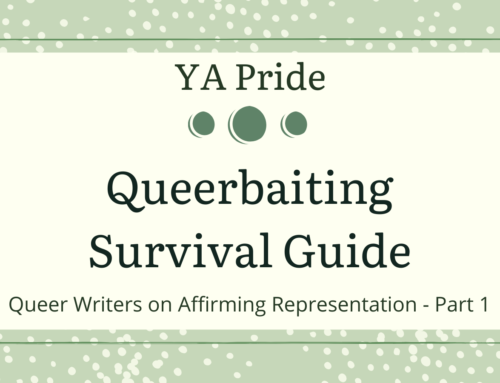by Candice
Happy LGBTQIA Heritage Month and happy 5th anniversary, Gay YA!!
I am so honored to have been invited to contribute to Gay YA’s awesome Pride Month and anniversary blogathon!
As the President of the Young Adult Library Services Association and the Senior Librarian of systemwide Teen Services at the Los Angeles Public Library, I wanted to highlight how some library staff have advocated for greater inclusivity and awareness of LGBTQIA communities and provide tips for those who want to organize and advocate locally.

I interviewed Xochitl Oliva and David Hagopian, the Chair and Co-Chair, respectively, of the Los Angeles Public Library’s Lesbian, Gay, Bisexual, Transgender, Queer/Questioning, Intersex, and Asexual/Androgynous Services Committee as our library system is getting ready to march in our second LA Pride Parade on June 12th in West Hollywood. David’s responses are in blue and Xochitl’s responses are in green.
What is the LGBTQIA Services Committee at Los Angeles Public Library?
The LGBTQIA Services Committee is a group of Los Angeles Public Library staff members from all regions, departments and classifications. Our goal is to share the excellent services and resources of the Los Angeles Public Library with all Angelenos in our diverse communities, with a special focus on service to LGBTQIA patrons. Our main projects include outreach, training for staff, providing themed book lists and program resources, and generating more visibility in untapped areas for the Library.
What are the committee’s goals?
The committee’s goals are programming for LGBTQIA patrons, outreach, collection development, more visibility for the library in LGBTQIA communities; and training for staff about LGBTQIA issues and concerns in the workplace. Also, as leaders of the group, one of our main goals is sustainability for the group. We want to make sure that this committee, or one that evolves from it, will continue at LAPL and be involved in advising and supporting all LGBTQIA-related issues and agendas at the Library. Additionally, the group has served as advocates for various issues since its inception. Staff has brought some things to our attention and we’ve been able to investigate and sort some things out.
Why and how was the committee started?
There was a need for LGBTQIA Services in several areas: programming, outreach and training, particularly.
It came about when Administration, responding to requests from LAPL staff throughout the system for more freedom to pursue special projects within the Library, invited staff to a meeting to discuss services that might be missing and ideas that might be untapped in all areas. LGBTQIA services was one area that came up. Staff at the meeting was asked to lead particular committees and I volunteered to lead this one. I think an email went out inviting staff to join and contact info was given for the various new groups. A handful of staff expressed interest in the LGBT (that’s actually what it was called back then) group and of those, five of us showed up and we went from there.
Can you tell us more about the resources, especially the YA booklists?
We created our first June LGBTQIA Heritage Month Resource Packet because we wanted to make it easier for librarians at our 73 branches to host June heritage month programs and give meaningful reader’s advisory on the topic. We recognized that members of the LGBTQIA community may be reluctant to ask for books on this topic in person, so we decided to create book lists as a resource for librarians and patrons. We encourage librarians to print and make the lists available in branches and we also post them on our public website. We recruited YA librarians to build and add to the list, so it is constantly growing.
Can you tell us more about the library participating in the LA Pride Parade?
We thought that marching in the LA Pride parade would be an opportunity to build community within our committee ranks while engaging in fun, active outreach. It’s a volunteer event and the goal is to make it as fun and engaging for our contingent as it is for the spectators. Our ambitious goal was to form a human rainbow by outfitting the contingent in custom t-shirts in the colors of the spectrum. We had an all staff contest for our tagline, “What’s Your Queery?” We printed it on our shirts, banner and promotional materials. It was a unique opportunity to show the LGBTQIA community how fun and inviting our library staff are. We also included our url (www.lapl.org/lgbtq) on promotional materials, in order to direct the public to our services.
What are the committee’s next steps?
We have grown so much and had a measureable impact on our Library’s services to the LGBTQIA community in two and a half short years. However, this advocacy work is something we all do in addition to our primary duties. In order to make the work more sustainable, we are currently expanding our leadership by making merit-based appointments of additional co-chairs so we can break up the work into the following categories: training, collection development and reader’s advisory, outreach and programming.
We are also working on getting approval for system wide Transgender & Gender Sensitivity Training made mandatory for all LAPL staff. Additionally, we continue to reach out to other City government agencies and organizations in the community with whom we might partnership, based on similar goals and agendas; the newly formed Transgender Advisory Council to the Mayor being one of them.
What tips can you give to others about building grassroots LGBTQIA advocacy in their organizations?
I think that the main tips that we could offer are (in no particular order):
- Have regular meetings, check in with group members, have a regular agenda and stick with it
- Constantly recruit. Always tell people about the group and the work it does and invite people to come to meetings or receive information. Ask people to ask people to come.
- Identify active members and support them in their efforts.
- Strong leadership. From the beginning Xochitl was the one who had ideas, enthusiasm and energy and was doing a lot of good work – all great qualities for a good leader of a group like this. She was the natural choice for chair of the group. We’ve been trying to identify others with similar qualities in an effort to given them an opportunity for a leadership role.
- Form partnerships. Everywhere. Within the organization. Outside of the organization.
- Tell people with power in the organization your good ideas to garner support.
- Make those people look good with the group’s good work.
- Be all inclusive and open to great ideas from everywhere.
- Try to have fun and to make it fun.
- Constantly work on ways to ensure sustainability and legitimacy within the organization. Little things, like pushing for a webpage; getting an email address for the group; participating as reps from the group in other departments’ “stuff”; identifying potential future leaders; making ourselves available to advise and advocate; getting an official logo; doing awesome work that gets the group noticed and mentioned

*Photos courtesy of Xochitl Oliva and Celia Avila
Also, for anyone attending the American Library Association’s Annual Conference in Orlando at the end of this month, my Presidential theme this year has been 3-2-1 Impact! Inclusive and Impactful Teen Library Services, which is a call to action to our members to improve services to underserved teens in our communities. My upcoming President’s Program at ALA Annua, on Monday, June 27th, from 10:30 a.m. – noon highlights inclusive and impactful library programs for teens from across the nation, including:
Ady Huertas, San Diego Public: LGBTQ+ Spectrum Club advisor: hosts weekly meetings, providing a space for youth to meet and share their experiences as well as plan activities to reach other youth in the community and raise awareness. Current focus is services to transgender and queer youth.
Courtney Saldana, Ovitt Family Community Library Ontario, CA: STeP – Skills for Teen Parents; with community partners, provides parenting and job skills training for pregnant and parenting teens aged 12-20.
Marian Mays, Washington Talking Book and Braille Library: by providing access to adaptive games (braille legos, braille board games, Audio Archery, etc.), visually impaired teens have the opportunity to develop the necessary social, emotional, and cognitive skills that give them a greater sense of independence and that can be transferred to educational and workplace settings as well as networking opportunities among peers. (Teen Tech Week winner)
Renee McGrath, Nassau County (NY) Library: in conjunction with a local theater group, created sensory theater experiences for teen with autism.
Veronica Caballero, San Mateo County Library: Incarcerated Youth Book Club brings books, 3D printing and other activities to incarcerated youth.
Rebecca Webb, Fairbanks (AK) Northstar Borough School District – created a Coding Camp for Native youth, giving them a chance to explore coding and teaching them useful computer skills (as well as patience, perseverance, and problem-solving skills), that would spark their interests and encourage them to stay in school. (Teen Tech Week winner)

—
Find Candice on Twitter: @TinyLibrarian
